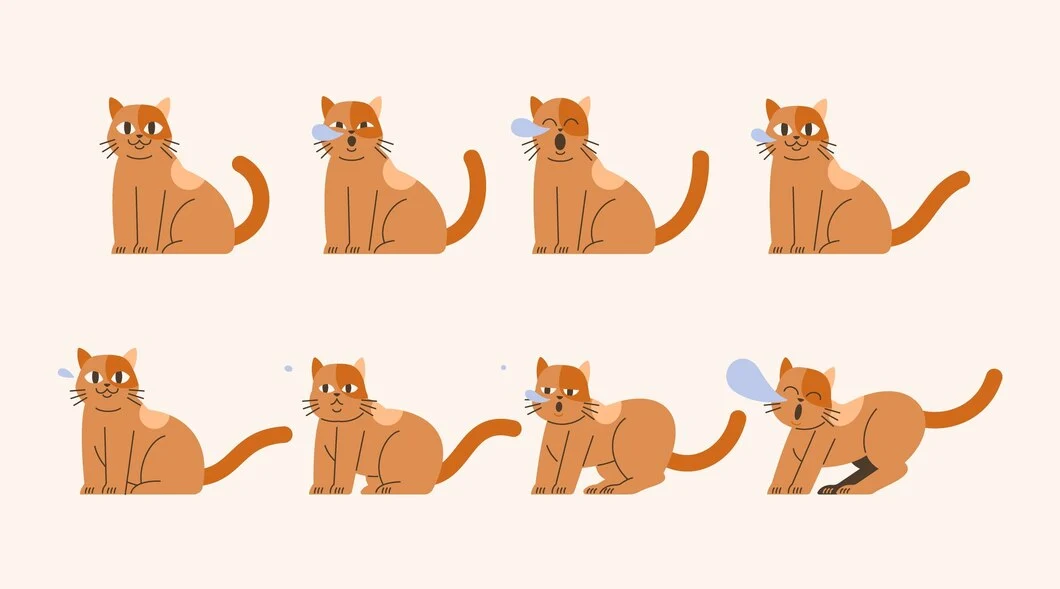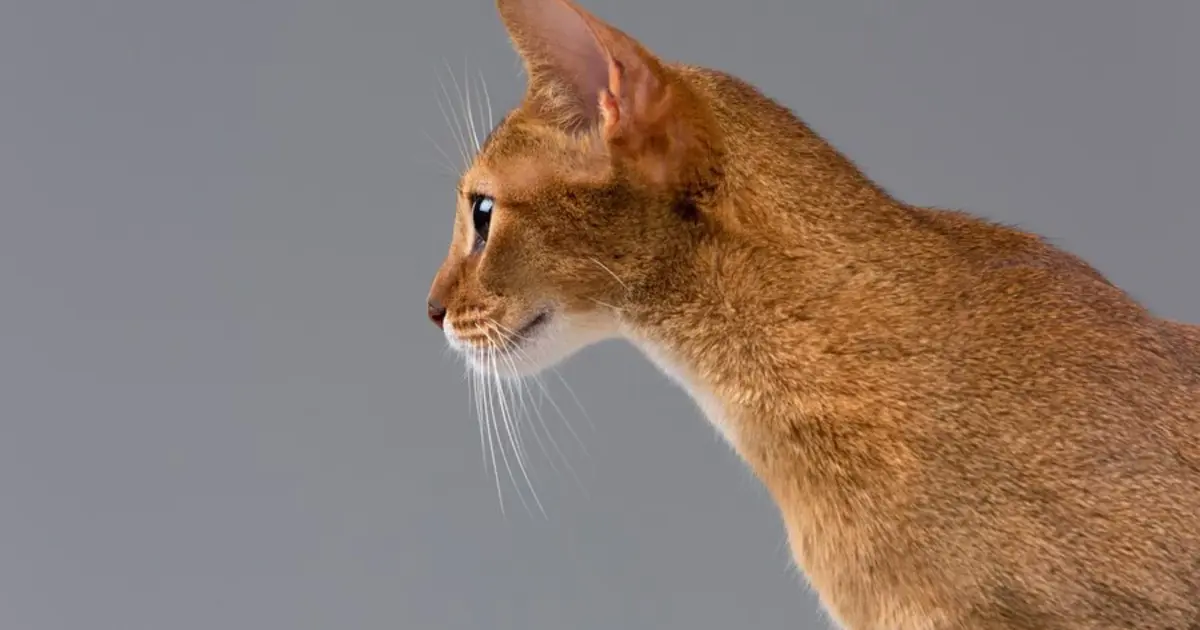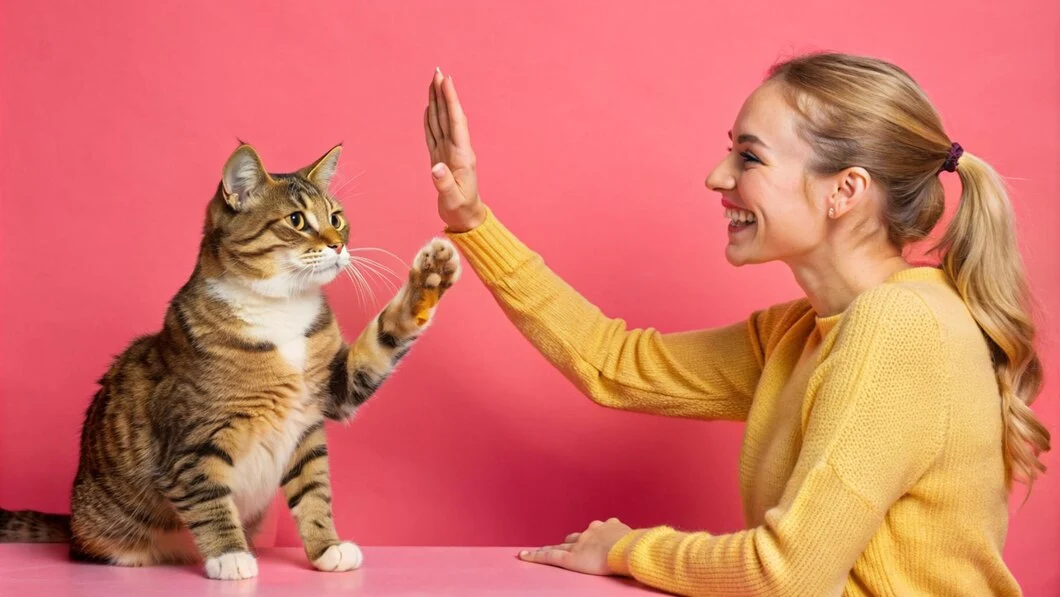Decoding Feline Behavior
In this article, “Understanding Your Cat’s Body Language: Decoding Feline Behavior,” we will delve into the fascinating world of cat behavior and explore the various cues that they use to communicate. From the twitching of their tail to the position of their ears, every little movement has a meaning.
As cat lovers, it’s essential for us to understand our feline friends and what they’re trying to communicate to us through their body language. Cats have a unique way of expressing their emotions and needs, and decoding their behavior can strengthen our bond with them.
By learning to read their body language, we can better anticipate their needs, recognize signs of stress or discomfort, and provide them with a safe and nurturing environment. We’ll discuss the different postures and gestures that cats exhibit when they are happy, anxious, or in need of attention.
Whether you’re a new cat owner or have cherished feline companions for years, this article will provide you with valuable insights into understanding your cat’s body language and deepening your connection with them. Join us as we unravel the secrets of our mysterious feline companions together.
The importance of understanding cat body language

Understanding cat body language is crucial for any cat owner who wishes to foster a healthy and harmonious relationship with their feline companion. Cats are inherently independent creatures, but they communicate their feelings and needs through subtle yet significant cues. By learning to interpret these signals, you can respond more effectively to your cat’s emotions, leading to a more fulfilling companionship. This understanding not only enhances your bond but also helps in ensuring your cat feels secure and happy in its environment.
When we take the time to observe and understand our cat’s body language, we gain insights into their emotional state. For example, a cat that is relaxed and content will exhibit different behaviors compared to one that is anxious or scared. Recognizing these differences allows us to modify our interactions to meet their needs, thus reducing stress for both the cat and the owner. Furthermore, understanding body language can prevent misunderstandings that could lead to behavioral issues or even aggression.
Additionally, cats are masters of disguise, often hiding their discomfort or fear until it becomes unbearable. By being attuned to their body language, we can catch these subtle signals early on. This proactive approach allows us to address any issues before they escalate, ensuring our feline friends remain happy and healthy. Ultimately, understanding cat body language transforms our relationship from mere pet ownership to a genuine partnership based on mutual respect and understanding.
Common feline body language cues
Felines use a variety of body language cues to communicate their feelings, and recognizing these can feel like unlocking a secret code. Some of the most common cues include tail movements, ear positions, and facial expressions. Each of these elements provides vital information about what your cat may be experiencing at any given moment. A slight twitch or a relaxed posture can tell you whether your cat is feeling playful, anxious, or comfortable in their surroundings.
One primary cue to consider is the tail position. A cat’s tail can express a range of emotions, from aggression to contentment. A high, upright tail often signifies that a cat feels confident and happy, while a low or tucked tail may indicate fear or submission. By paying attention to these cues, we can develop a deeper understanding of our cat’s emotional landscape and respond accordingly.
Another essential aspect of feline communication is the eyes. A cat’s gaze can convey a wealth of information. Slow blinking can indicate trust and affection, while dilated pupils may signal excitement or fear. Understanding these nuances can enhance your interactions, making them more meaningful and tailored to your cat’s emotional state. Overall, being aware of these common cues makes it easier to nurture a loving and trusting relationship with your feline friend.
Decoding tail movements and positions
The tail is one of the most expressive parts of a cat’s body, serving as a crucial communication tool. When a cat holds its tail high, it usually indicates confidence and happiness. This posture is often seen when a cat approaches you for attention or when it explores its surroundings with curiosity. Conversely, a low or tucked tail signifies submission or fear, suggesting that the cat feels threatened or insecure. Observing these tail positions can provide immediate insight into your cat’s emotional state.
A tail that is puffed up indicates a defensive posture, often seen in situations where a cat feels threatened or scared. This “puffed-up” look makes the cat appear larger and more intimidating to potential threats. If you notice your cat adopting this tail position, it’s best to give them some space until they feel comfortable again. Additionally, a slowly twitching tail can signify excitement or irritation, depending on the context; this is often seen when a cat is playing or feeling agitated.
Understanding these tail movements can greatly enhance your interactions with your cat. For instance, if you see a happy, high tail and approach your cat, you can engage in petting or playtime, knowing they are in a good mood. Conversely, if their tail is low or puffed, it may be best to give them some time alone. By reading these signals accurately, you can create a more supportive environment for your feline friend, ensuring their emotional needs are met.
Understanding ear positions and movements

In addition to tail movements, ear positions are another significant aspect of feline body language. Cats have highly mobile ears that can rotate almost 180 degrees, allowing them to pinpoint sounds and express their feelings. When a cat’s ears are perked up and facing forward, it typically indicates curiosity or interest. This position signals that your cat is engaged with its environment and is likely open to interaction.
Conversely, if a cat’s ears are flattened against its head, it is often a sign of fear, aggression, or irritation. This position indicates that the cat feels threatened or is preparing to defend itself. It’s essential to recognize this cue, as approaching a cat in this state can lead to aggressive behavior. Understanding ear positions can help you gauge your cat’s mood and determine whether it’s a good time for interaction or if they need space.
Another interesting observation is the way a cat may flick or twitch its ears. This action can signify annoyance or agitation, especially if the cat is trying to focus on a specific sound but is distracted. If you notice this behavior, it might be wise to give your cat some time to settle down. By interpreting these ear movements, you can better navigate your cat’s emotional landscape, making your interactions more enjoyable and less stressful for both of you.
Interpreting facial expressions and eye movements
Facial expressions and eye movements are key components of feline communication. While cats may not express emotions in the same way humans do, they do convey feelings through subtle changes in their facial features. For example, a relaxed cat will have soft, slightly squinted eyes and a calm expression. This demeanor indicates that the cat feels safe and comfortable in its environment.
On the other hand, wide-open eyes with dilated pupils can signal excitement, fear, or aggression. If you notice your cat staring at something with intense focus and wide eyes, it could be a sign that they are feeling threatened or are preparing to pounce on a perceived prey. In these situations, it’s important to approach with caution and assess what might be causing the cat’s heightened state of alertness.
Slow blinking is another fascinating behavior in cats. When a cat looks at you and slowly closes its eyes, it is often a sign of trust and affection. This action can be interpreted as a “cat kiss,” indicating that your feline friend feels safe enough to let its guard down. If you reciprocate this slow blink, it can strengthen the bond between you and your cat. Understanding these facial expressions and eye movements allows you to connect with your cat on a deeper emotional level, enhancing your relationship significantly.
Deciphering vocalizations and purring
Cats communicate not only through body language but also through vocalizations. Each sound your cat makes can convey different meanings, making it essential to pay attention to the context in which these sounds occur. The classic meow is often used to get your attention, but the pitch and tone can indicate various emotions. A short, high-pitched meow might signify excitement, while a low, drawn-out meow could indicate annoyance or a desire for solitude.
Purring is another vocalization that can sometimes be misinterpreted. While it is commonly associated with contentment, cats also purr when they are in pain or feeling ill. This dual-purpose vocalization can be confusing, as it doesn’t always indicate happiness. Therefore, it’s crucial to observe other body language cues alongside the purring to assess your cat’s emotional state accurately.
Furthermore, growling, hissing, or yowling are sounds that typically indicate discomfort, fear, or aggression. If your cat is vocalizing in this manner, it’s essential to give them space and try to identify the cause of their distress. By learning to interpret these vocalizations accurately, you can address your cat’s needs more effectively and create a more harmonious living environment.
Reading body postures and positions
Body posture is one of the richest sources of information about a cat’s feelings. A cat’s stance can reveal its level of confidence, comfort, or distress. For instance, a cat that is lounging comfortably with its paws tucked under its body is generally relaxed and at ease. This position indicates that the cat feels safe in its surroundings and is likely enjoying its environment.
In contrast, a cat that stands tall with its back arched and fur standing on end is displaying a defensive posture. This stance suggests that the cat feels threatened and is preparing to react to a potential danger. Recognizing these body postures can help you respond appropriately, whether it means offering comfort or giving your cat some space.
Another important posture to note is the “cat loaf” position, where the cat sits upright with its paws tucked beneath its body. This position indicates that your cat is alert yet relaxed, often seen when they are resting but still aware of their surroundings. By observing these various postures, you can better understand your cat’s emotional state and respond to their needs more effectively, fostering a deeper bond between you and your furry friend.
Recognizing signs of fear, aggression, and anxiety
Understanding the signs of fear, aggression, and anxiety in cats is vital to ensuring their well-being. When a cat feels threatened, it may display a range of behaviors, such as hiding, hissing, or swatting. Flattened ears, dilated pupils, and an arched back are all clear indicators that your cat is feeling scared or defensive. In these situations, it’s essential to provide a safe space for your cat to retreat to, allowing them to calm down at their own pace.
Aggression can manifest in various forms, including vocalizations, swatting, or biting. Recognizing these signs early can help prevent escalation. If your cat is showing aggressive behavior, it’s often best to avoid direct confrontation and instead give them space to cool off. Understanding these signals can help you manage your cat’s environment effectively, reducing the likelihood of aggressive incidents.
Anxiety in cats can also be expressed through excessive grooming or changes in eating habits. If you notice your cat is grooming itself more than usual or has stopped eating, it may be a sign of stress or anxiety. Identifying the root cause of this anxiety—be it changes in the household or environmental factors—can help you address the issue and provide a more stable, comforting environment.
Conclusion: Strengthening the bond with your cat through body language understanding
Understanding your cat’s body language is an invaluable skill that can significantly enhance your relationship with your feline friend. By recognizing the various cues your cat provides, you can create a more harmonious living environment that caters to their emotional needs. This understanding not only helps you respond more effectively to your cat’s moods but also fosters a deeper bond built on trust and empathy.
As you become more attuned to your cat’s body language, you’ll find that your interactions become more meaningful and enjoyable. The ability to interpret their signals allows you to anticipate their needs, whether it’s playtime, comfort, or a little space. This proactive approach leads to a happier, healthier cat and a more fulfilling relationship for both of you.
In conclusion, taking the time to learn about your cat’s body language is a rewarding endeavor that can transform your companionship. By investing in this understanding, you empower yourself to create a nurturing environment where your cat can thrive emotionally and physically. So, the next time your feline friend twitches its tail or gives you a slow blink, remember that these gestures are keys to a deeper connection, making your journey together all the more special.
